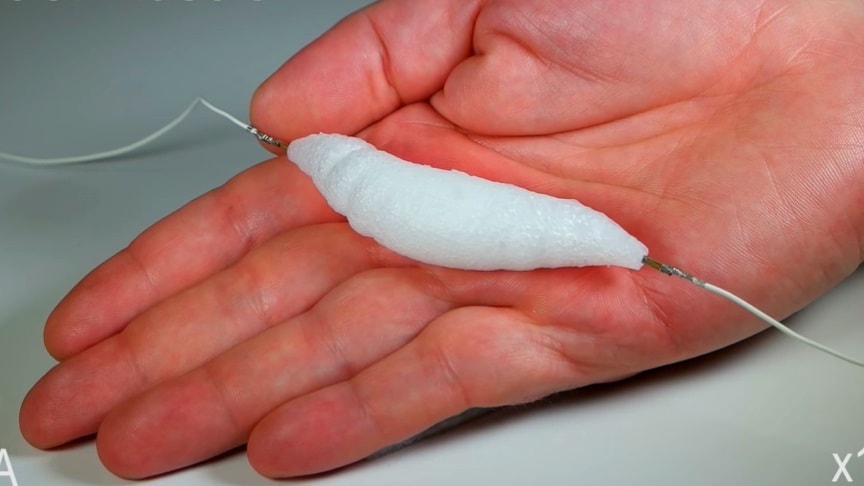Electrically-Actuated Artificial Muscle – One Step Closer to Lifelike Robots

The artificial muscle in use as a bicep lifts a skeleton’s arm to a 90 degree position.Researchers at Columbia Engineering have solved a long-standing issue in the creation of untethered soft robots whose actions and movements can help mimic natural biological systems.
source/image: Columbia Engineering
Aslan Miriyev and Kenneth Stack, in the Creative Machines lab led by Hod Lipson, professor of mechanical engineering, have developed a 3D-printable synthetic soft muscle, a one-of-a-kind artificial active tissue with intrinsic expansion ability that does not require an external compressor or high voltage equipment as previous muscles required.
Due to their high flexibility, versatility and power-to-weight ratio compared with traditional rigid actuators, artificial muscles have the potential to be a highly disruptive emerging technology. Though currently in limited use, the technology may have wide future applications in industry, medicine, robotics and many other fields.
Advertisement
While there is no general theory that allows for actuators to be compared, there are “power criteria” for artificial muscle technologies that allow for specification of new actuator technologies in comparison with natural muscular properties. In summary, the criteria include stress, strain, strain rate, cycle life, and elastic modulus.
https://ift.tt/2HqeBBA